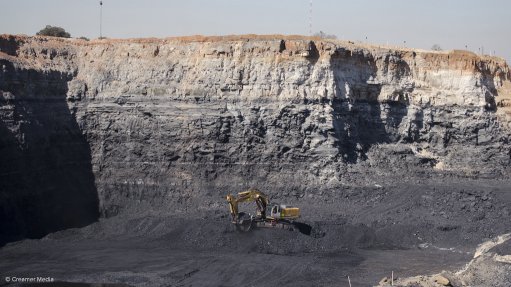
OFTEN NEGLEGTED Unfortunately, the need for including rehabilitation components early on in mine plans is often neglected in South Africa
Photo by: Victor Moolman
Rehabilitation should be included and budgeted for in a project’s initial mine plan to ensure proper project management over the entire mine life cycle, says nonprofit organisation Land Rehabilitation Society of South Africa (LaRSSA) president Raina Hattingh.
“Unfortunately, the need for including rehabilitation components early on in mine plans is often neglected in South Africa,” she points out.
Rehabilitation activities should be implemented as soon as site disturbance – construction – starts and maintained throughout the operational and decommissioning periods, Hattingh explains. “Importantly, these activities remain even more pertinent during the monitoring and maintenance period, during which successful implementation of the predefined land use can be demonstrated,” he adds.
LaRSSA VP Piet Smit notes that a properly developed project scope that takes rehabilitation concerns into account from the start ensures the proper roll-out of concurrent rehabilitation. The project management should have a feedback loop that allows for continuous adjustment to the rehabilitation plan and ensures the project scope is delivered.
“Mining companies need to start proper project management in the prefeasibility phase, ensuring that the correct data is collected and worked into usable information for decision-making and project planning . . . companies then have to develop the project actions according to legislated and funders’ requirements,” he states.
Hattingh adds that, when implementing rehabilitation activities, spatial and temporal planning is continually changing throughout the mining life cycle.
“Therefore, amendments, refinements or corrective action should be an integral aspect of rehabilitation planning, improving the trajectory towards success as new site knowledge and learnings become available,” she states.
Project management should be seen as a ‘living’, changing tool, aligning mine and rehabilitation planning towards a common goal – eventual site relinquishment of a functioning landscape for future generations, adds Hattingh.
The rehabilitation plan should, like the mine plan, be reviewed every year to improve decision-making, optimising material movement and improving equipment use. Further, the execution of any project requires dedicated preplanning to ensure all team members’ roles, responsibilities and expectations are aligned, states Hattingh.
A lack of understanding of materials handling during construction, how to remove soils and the best locations for temporary stockpiles, as well as poor soil stockpile management during operations, seems to be prevalent in the mining industry, she notes. The quality of the soil resource available for managing disturbed areas remains a fundamental component of successful rehabilitation projects.
“Should proper rehabilitation not be incorporated into all phases of a mine plan, the amount of soil available may be [insufficient] or of poor quality, significantly increasing costs and the human capital required to meet company and regulatory postmining land needs.”
Hattingh explains that project management is a way of detecting possible project challenges early, and of ensuring that corrective action is taken as required.
Proper project management not only assists in ensuring that rehabilitation is delivered on time and in accordance with the scope of work outlined by the mining company, but also traces cost and quality. Hattingh points out that, too often, rehabilitation is outsourced and not managed to the same standard as mining.
“Without adequate project management standards, many rehabilitation projects suffer, with the . . . focus being on cost and hectares completed and not on the quality of rehabilitation. Project management will ensure that the correct parameters have been established and key performance indicators are identified and managed,” she elaborates.
Advantage of Technology
Hattingh explains that there are numerous project-management-related software packages available to help define actions, responsibilities and associated costs.
“They provide a mechanism against which actual implementation can be assessed and corrected, if necessary, greatly reducing uncertainties of project outcomes. Such packages and tools include those that focus on land surveys, conceptual designs required upfront to plan the mine, and rehabilitation development with detailed designs required prior to the start of rehabilitation work,” she points out.
Smit says companies can use software packages that track the costs and progress of rehabilitation projects, “but the most critical part would be to appoint an adequately trained and experienced project manager, preferably one with mining experience”.
However, a lack of experienced project managers and the cost that engineers have to deal with in terms of multifaceted mining projects are adding to the challenges the industry is facing, he notes.
Hattingh adds that, without an experienced mine management team that understands the complexities and can harness co-opportunities in surrounding communities, projects often take longer to complete, become more expensive and do not achieve their planned outcomes.
Providing a Platform
Since 2012, LaRSSA has hosted four annual conferences, numerous workshops and field visits, all providing an opportunity for active discussions and transfer of learnings.
“During this time, the importance of including land rehabilitation in upfront project planning has been demonstrated numerous times. Examples of good practice highlighted by members always include a strong project management element, whether on a mining site, farmland or rural homeland setting,” Hattingh concludes.